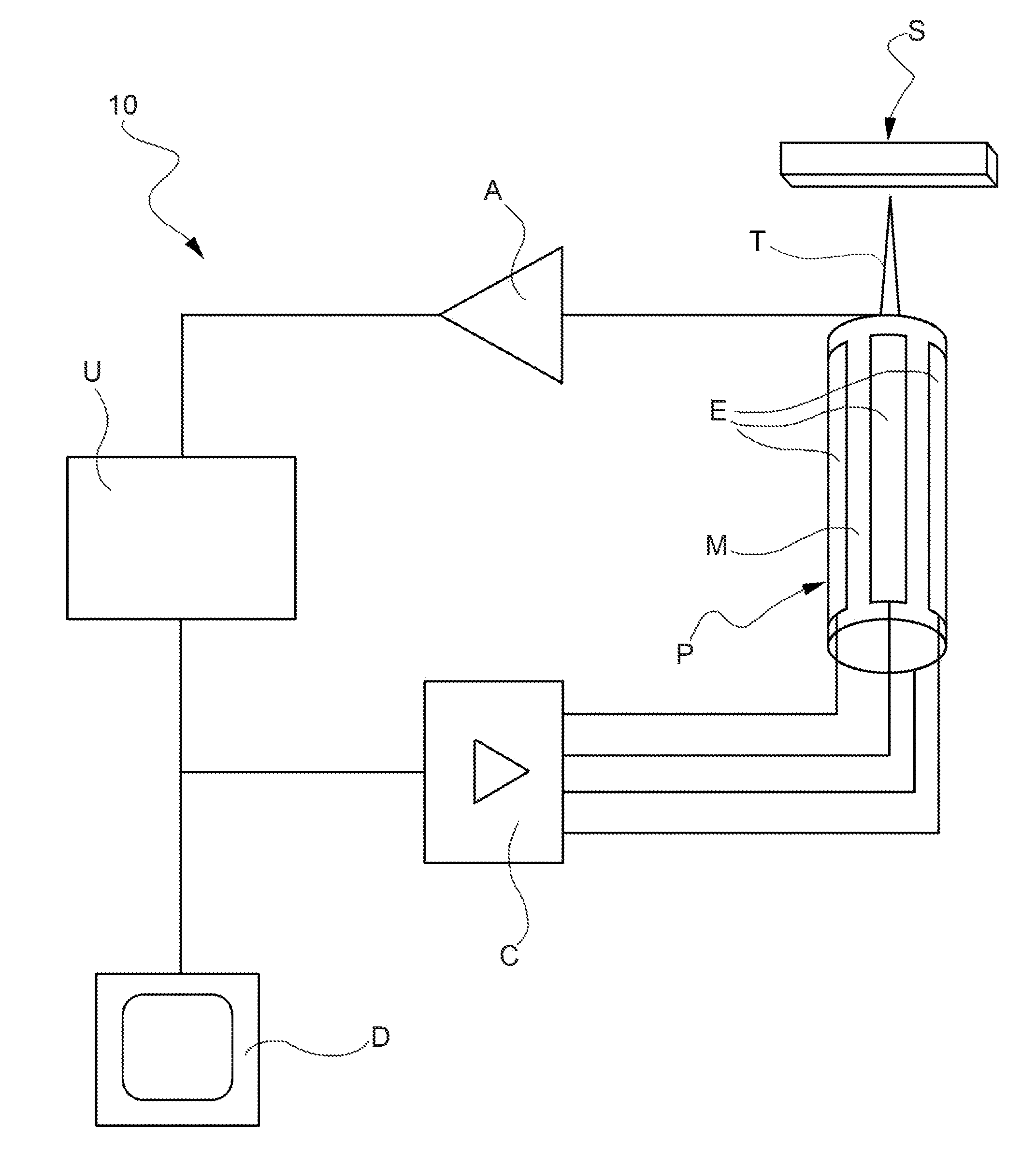Method for driving a scanning probe microscope at elevated scan frequencies
a scanning probe and scanning frequency technology, applied in scanning probe techniques, instruments, nanotechnology, etc., can solve the problems of limiting the scan speed of scanning probe microscopes, the time resolution of commercially available spm instruments is one of their most severe limitations, and the dedicated spms do not have enough time resolution to allow, so as to improve the time resolution of commercial scanning probe microscopes, improve the scanning capability, and save time and money. , the effect of increasing the scanning speed
- Summary
- Abstract
- Description
- Claims
- Application Information
AI Technical Summary
Benefits of technology
Problems solved by technology
Method used
Image
Examples
Embodiment Construction
[0026]With reference to FIG. 2, the arrangement of the SPM instrumentation according to the invention is shown, where like references are used to refer to the same components as defined in FIG. 1. A scanning tunneling microscopy arrangement 10 is here below disclosed as a preferable embodiment, but a skilled person would clearly realize that the method of the invention is adapted for any technique of scanning probe microscopy.
[0027]A probe P associated with a specimen S to be imaged is shown, which comprises a scanning element, such as a sharp tip T or cantilever, carried at the end of a piezo-electric support member M. The piezo-electric member allows for performing both distance regulation between the tip and surface and scanning of the specimen under investigation. The piezo-electric member is controlled so as to move the tip in the directions parallel to the surface of the specimen (commonly identified by x- and y-axes) for achieving the scanning of the specimen surface, and to ...
PUM
 Login to View More
Login to View More Abstract
Description
Claims
Application Information
 Login to View More
Login to View More - R&D
- Intellectual Property
- Life Sciences
- Materials
- Tech Scout
- Unparalleled Data Quality
- Higher Quality Content
- 60% Fewer Hallucinations
Browse by: Latest US Patents, China's latest patents, Technical Efficacy Thesaurus, Application Domain, Technology Topic, Popular Technical Reports.
© 2025 PatSnap. All rights reserved.Legal|Privacy policy|Modern Slavery Act Transparency Statement|Sitemap|About US| Contact US: help@patsnap.com



